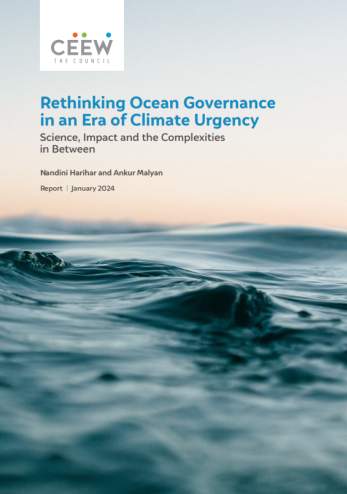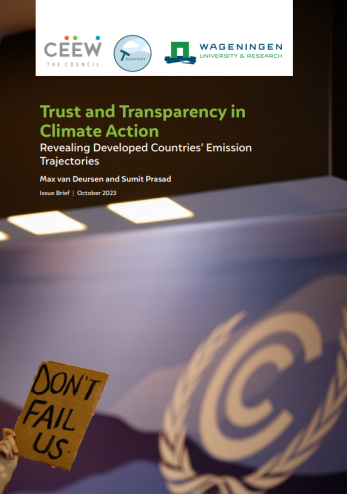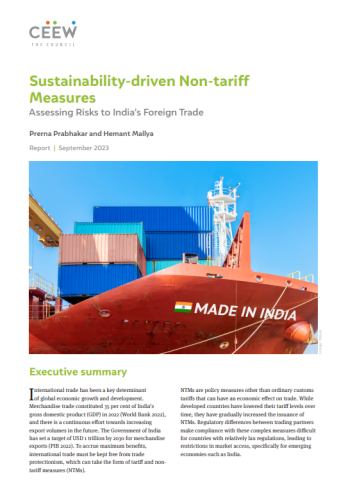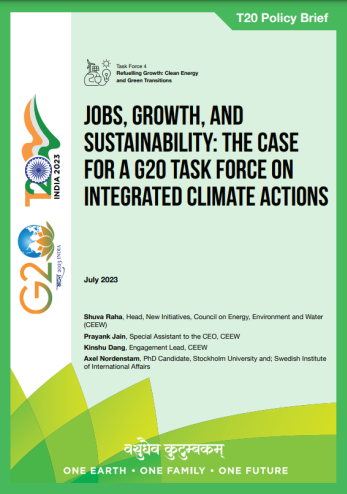



Suggested Citation: Aggarwal, Jhalak and Sumit Prasad. 2023. Operationalising the Loss and Damage Fund to Address Climate Impacts. New Delhi: Council on Energy, Environment and Water.
To operationalise the Loss and Damage Fund (LDF)— established at the 27th Conference of Parties (COP27) after intense negotiations — a Transitional Committee (TC) has been tasked with providing recommendations on the institutional arrangements, elements of the funding arrangements, sources of finance, and ensuring coordination and complementarity with existing arrangements for L&D. This report attempts to answer the following questions – the scope of the fund, who pays, who receives, how much, and how the fund fits into the current finance architecture to provide the solutions needed. It also makes recommendations for the immediate accessibility component of the LDF, which focuses on processes that allow for the quick disbursal of finance that is fit for purpose.
Though the political commitment to establish a fund has been fulfilled, the real test now lies in reaching a consensus on operationalising it. It is important that COP28 delivers solutions ensuring finance is new, additional, predictable, adequate, fair, and debt free in the light of the current economic and climate realities.
A series of ongoing extreme weather events and disasters fuelled by climate change have devastated the lives and livelihoods of millions, and cost billions in losses and damages, especially in the Global South. The massive floods in Pakistan in 2022 inundated almost one-third of the land area, causing damages worth 10 per cent of the country’s gross domestic product (GDP)(World Bank 2022). Himachal Pradesh is currently devastated by cloudbursts and floods, reporting losses worth USD 487 million (Economic Times, 2023). This, compounded by carbon inequality, unjust distribution of impacts, inflation, and a debt crisis serves as a clarion call for loss and damage (L&D) finance to address, avert, and minimise climate impacts. L&D finance has been kept at arm’s length by developed countries ever since it was proposed 30 years ago in 1991 by the Alliance of Small Island States (AOSIS) (Government of Vanuatu 1991). But it was only in 2022, at the 27th Conference of the Parties (COP27), that they reached a long-overdue agreement. This marked a difficult and much-needed win for vulnerable nations, with the Parties agreeing to establish a Loss and Damage Fund (LDF) and funding arrangements to pay for climate-related L&D (UNFCCC 2022b). Though the political commitment to establish a fund has been fulfilled, the real test now lies in reaching a consensus on operationalising it.
To expedite the process of operationalising the fund, a transitional committee (TC) has been established and tasked with formulating recommendations; deliberations are ongoing.
As COP28 approaches, Parties, sub-national representatives of communities, climate activists, and experts across the world have their eyes set on the operationalisation of the LDF. This report examines the important elements that TC members must consider, particularly the immediate accessibility component of the LDF, which focuses on processes that allow for the quick disbursal of finance that is fit for purpose. It considers the following questions – the scope of the fund, who pays, who receives, how much, and how the fund fits into the current finance architecture to provide the solutions needed.
There are several challenges that complicate the operationalisation of the fund:
As a step forward, we propose a framework to operationalise the fund, with a specific focus on ensuring immediate accessibility. Our report aims to help TC members, negotiators, and policymakers with operationalising the LDF, particularly with defining the broad principles for the design and operation of the fund and the most appropriate financial instruments. This research can be used to determine the modalities that will ensure easy and immediate access, assess the effectiveness of the instruments to make them fit for purpose, and offer options to operationalise different elements under the fund. We provide the following recommendations from a developing country’s perspective to the TC to ensure timely operationalisation of the LDF:
We provide suggestions to increase understanding and capacity to address challenges related to L&D that can further expedite action on the subject:
As we approach COP28, the TC should offer the Parties clear recommendations for the operationalisation of the LDF. Bridging the gap in the ability of developing nations to secure adequate, predictable, and sustainable financial support is pivotal to provide assistance to those most affected.
Loss and damage commonly refers to the irreversible and unavoidable impacts of climate disasters (extreme and slow-onset events) that cannot be or have not been addressed through mitigation (reducing greenhouse gas emissions) or adaptation (adjusting to and building resilience against current and future climate change impacts). However, there is no official definition under the UN.
The Alliance of Small Island States (AOSIS) was the first negotiating bloc to call attention to loss and damage in 1990, realising their vulnerability to the rising seas. However, the first real action was in 2013 with the establishment of the Warsaw International Mechanism on Loss and Damage (WIM) to enhance knowledge, strengthen dialogue, and increase support to address L&D; but it failed to deliver on the third function. Then, the Santiago Network was set up in 2019 to catalyse technical support and the Glasgow Dialogue in 2021 as a compromise to G77+China’s demand for a dedicated facility. It was only at COP27 when Parties finally reached a long-overdue agreement to establish a fund to pay for climate-related L&D.
This refers to providing compensation to countries that have suffered significant harm or losses due to adverse climate impacts beyond the capacity of communities and countries to cope with or adapt to. However, the discussions have always remained complex and politically charged due to concerns related to responsibility and liability. Developed nations have rejected the official discussions on the topic fearing admission of legal liability, litigation, and claims worth billions of dollars. In fact, at COP27, when the agenda on loss and damage funding was added, countries agreed the outcome based on cooperation and facilitation, and without invoking issues of liability or compensation.

Rethinking Ocean Governance in an Era of Climate Urgency

Trust and Transparency in Climate Action

Sustainability-driven Non-tariff Measures

Jobs, Growth, and SustainabilityThe Case for a G20 Task Force on Integrated Climate Actions